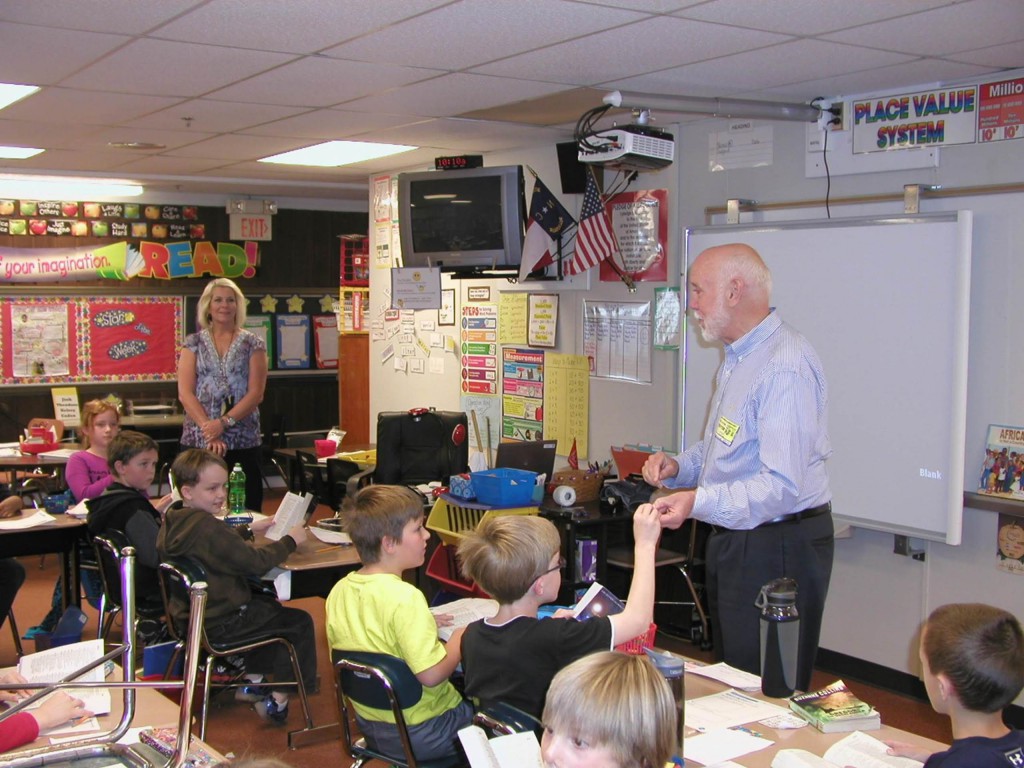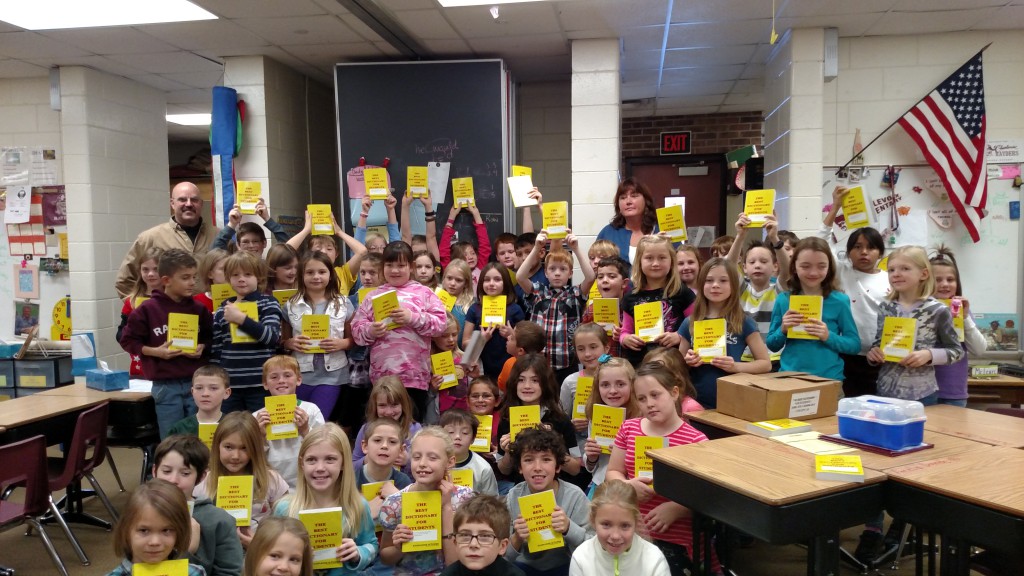P.O. Box 180159
Coronado, CA 92178
Coronado, CA 92178
Distribution Day!
So you have set up a delivery date with the school? The teachers expect you at a certain time? Are you ready to see all that hard work pay off? It must be Distribution Day!
First thing: Check in at the school office upon your arrival.
Presentation Suggestions:
- Speak clearly and make eye contact with the students.
- Only call on students who raise their hands.
- Wait until the students are quiet before continuing.
- Be enthusiastic. They are getting their very own personal dictionary that they can take home with them to show their parents and use when they do their schoolwork. The intention of this presentation is to get them excited about using a dictionary.
- Try to keep the presentation brief, about 10-15 minutes.
How to Present Your Dictionaries:
The power of the gift resides in the giving. Our volunteers are busy people who take time from their work—some sponsors host an assembly while others visit each classroom.
- Introduce Yourself.
Write your name on the board. Describe the goals of your organization. Personalize it, explaining to the students why you are involved in this organization. - What is a Dictionary? Explain to the students what a dictionary is and how they can use it. Let the children know that you and your colleagues want them to succeed in school and in life and that you know they cannot do their best work without one.
- Distribute the dictionaries and ask students to write their first and last name in the book.
- Why do people use dictionaries? Emphasize that in the business world it is important to speak and write correctly. A command of the English language makes you more successful. You may have your own personal experience you want to share.
- Key Features of a Dictionary:
- Tell the students that words in the dictionary are in alphabetical order and they can look them up by sounding out the first few letters. Look up at least one word together as a class by going through the steps. Ask for a word, write the first few letters on the board, look up the word and then point out how they can learn a word’s pronunciation, its spelling, its part of speech, and definition.
- Talk about the meaning of words. Some words have multiple meanings; for example, “right” can mean the opposite of left and also the opposite of wrong. These are homonyms. Homophones are two words that sound the same but are spelled differently, such as “write” and “right.” Perhaps the students can suggest others.
- Play a Game. Play a game to practice dictionary skills. Give the students a word. Have a race to see which student can find the word first. Ask the students to raise their hand and call on different students to give you the page number, spelling and definition of the word. Challenge the students by asking them to use that word in a sentence.
NOTE: If you ordered a dictionary with supplemental information in the back, use it! Ask questions, “Who was the president in 1860? What is the Capital of Connecticut? How do you pronounce the longest word?” - Thank the students and their teacher for allowing you to visit their classroom. You may want to hand out worksheets that the teacher can use to practice dictionary skills.


